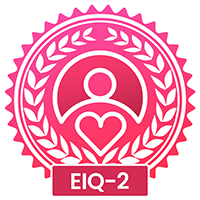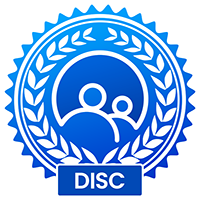10 Steps to Become a Doctor: A Comprehensive Guide
Becoming a doctor is a fantastic accomplishment. Practicing medicine is a privilege. As physicians, we have the opportunity to serve our patients and make a difference.The road from aspiring to be a doctor to a practicing physician is long. It requires hard work, perseverance, and sacrifice. Most importantly- it requires a plan. This blog describes the 10 steps needed to move from an aspiring to a practicing physician.
Step 1: Pursue a Bachelor’s Degree
To become a doctor, you must earn a bachelor’s degree. While specific course requirements may vary depending on the school, most medical schools require applicants to complete two semesters of biology with lab, one semester of general chemistry with lab, two semesters of organic chemistry with lab, one semester of biochemistry, two semesters of physics with lab, one semester of calculus, one semester of statistics, and two semesters of English (at least one as a writing course). There’s no “best” premed major, but popular ones include biological, physical, social, and humanities sciences. You can check the AAMC and Med School Admissions Requirements websites for specific details about each school. The average GPA for medical school applicants ranges from 3.6 to 3.8, but getting in with a lower GPA is possible.
Step 2: Participate in Research
Medicine is a science, and many medical schools value applicants who understand the scientific process. Participating in research can help you develop valuable skills in asking questions, designing studies to answer those questions, and analyzing data. These skills directly translate to the practice of medicine, where physicians must be able to explore the most recent literature to apply it to patient care. Research experience is also common and can set you apart from other applicants.
Step 3: Engage in Service Activities and Obtain Clinical Experiences
Medicine is not just a science but also an art. Physicians must have excellent communication, leadership, and emotional intelligence skills. These traits can be challenging to assess in an application, so it’s important to demonstrate them through your activities. Volunteering and participating in student organizations are two ways medical school applicants can demonstrate these soft skills. The medical system is complex, and medical training and practice are rigorous, so clinical experiences can help students understand what they’re getting into. Service activities and clinical experiences can include shadowing, clinical experience, community service, research experience, and leadership.
Step 4: Take the MCAT
The Medical College Admission Test (MCAT) is a standardized, multiple-choice, computer-based test that all medical schools in the US require. The test assesses skills and knowledge considered prerequisites for medical school success, including biological and biochemical foundations of living systems, chemical and physical foundations of biological systems, psychological, social, and biological foundations of behavior, and critical analysis and reasoning skills. Scores from the four sections are combined to range from 472 to 528. For the 2023-2024 academic year, the average score for all test takers was 501.3; for applicants, it was 506; and for enrolled students, it was 511.9. The average score for Caribbean schools was 497. Preparing well for the MCAT is essential, as it’s a key component of your medical school application.
Step 5: Apply to Medical School
The application process for medical school is complex and requires careful preparation. Three primary application systems exist: AAMCAS, AACOMAS (DO), and TMDSAS (Texas). All require a personal statement, a work and activities section, and essays. Secondary or supplemental applications, letters of reference (science, non-science, extracurricular), an interview, and the CASPER (Computer-Based Assessment for Sampling Personal Characteristics) are also part of the application process. It’s essential to research each school’s requirements carefully and apply early to increase your chances of acceptance.
Step 6: Complete Medical School
Medical school typically takes four years to complete, with two years of didactic classroom-based work and two years of clinical studies. Medical students learn about the human body, diseases, and treatments during medical school. You will also learn how to communicate with patients, work in a team, and make ethical decisions. Focusing on your studies and developing good study habits during medical school is essential, as your performance will impact your residency training competitiveness.
Step 7: Pass USMLE or COMLEX Steps 1 and 2 and Apply for a Medical License
After completing medical school, you must pass the United States Medical Licensing Examination (USMLE) or Comprehensive Osteopathic Medical Licensing Exam (COMLEX) Steps 1 and 2. These exams assess your readiness to practice medicine independently. Every practicing physician must obtain a license; licensure requirements vary by state. All states require completion of medical school, all three steps of USMLE or COMLEX, and at least one year of residency.
Step 8: Choose a Medical Specialty and Complete a Residency Program
After passing the USMLE or COMLEX, you can choose a medical specialty and complete a residency program. Residency programs are structured training programs that provide hands-on experience in a specific medical specialty. Most residencies use the Electronic Residency Application Service (ERAS), but some, like ophthalmology, use a separate match (San Francisco match). Residency programs last between three and seven years, depending on the specialty. It is possible to subspecialize following a residency in a fellowship program.
Step 9: Become Board Certified
While not required, 98% of patients expect physicians to be board-certified, and many organizations require it as a condition of employment. Board certification is a way to demonstrate your expertise in a medical specialty. Requirements for board certification vary by specialty but generally include obtaining an unrestricted license, completing a residency program, and passing written exams. Some specialties also require oral exams.
Step 10: Maintain Your Certification
After becoming board-certified, it’s crucial to maintain your certification by keeping your knowledge current with continuing medical education (CME) and maintenance of certification (MOC). CME requirements vary by state and specialty, and MOC requirements vary by specialty. It’s essential to stay up-to-date with the latest developments in your field and continue to learn throughout your career as a physician.
Achieving your dream of becoming a doctor requires dedication, perseverance, and a lifelong commitment to learning. By following these steps, you can turn your dream into a reality and make a positive impact in the field of medicine. Becoming a doctor is not easy, but with passion and hard work, you can achieve your goals. Celebrate every success and learn from every failure.
Take care of your physical and mental well-being throughout your journey! Self-care is essential for success. The journey may be long, but the impact you can make on people’s lives is immeasurable.
If you want guidance at any point in your medical Journey, The Developing Doctor can help! I have coached hundreds of premeds, medical students, residents, fellows, and physicians to success. Contact me to learn more about my coaching programs!







